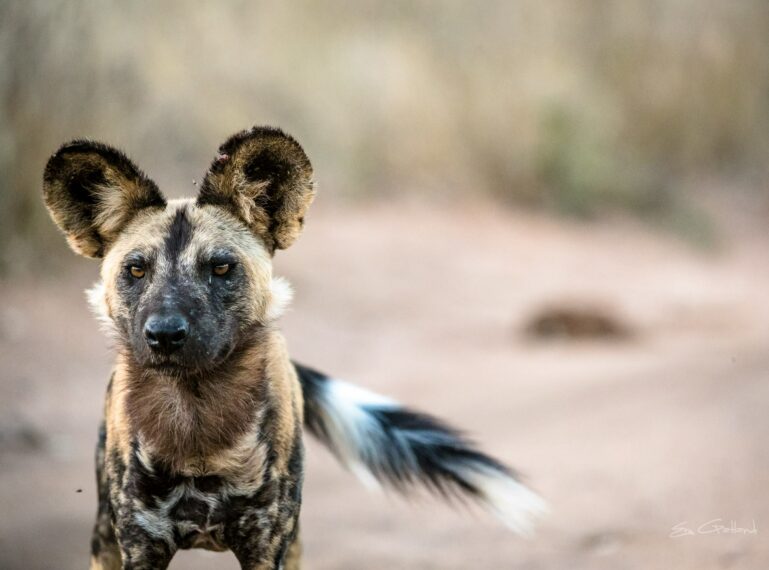
Sun Destinations’ continued effort to make an impact in the conservation space is driven by a deep commitment to protecting wildlife and empowering local communities. In previous blog posts, we touched on our company’s two major companies that we support: Nourish and EWT (Endangered Wildlife Trust). EWT has a multitude of programs, one of which is the conservation of African wild dogs. Although these ‘painted wolves’ roam our reserves in large numbers, their nomadic nature makes them notoriously difficult to track. However, during their denning season, typically from May to August, they become more settled, making it easier to spot the packs. As passionate advocates for wild dogs, we’ve put together a wealth of interesting facts to better equip you before your next safari to Kruger or Botswana.
Where to see African wild dogs
African wild dogs are widespread across Kruger and Botswana. Safari goers to Botswana who stay at Mboma Island Expeditions, frequently report seeing the dogs while out on game drive in the Moremi Game Reserve, a hotspot for predators. Camp Savuti’s backyard is the Chobe National Park, another wildlife-rich reserve teeming with wild dog activity. Your best chance of seeing these mottled beauties is between May and September, peaking during the months of May/June when there’s a high chance of seeing the pups. In the Kruger, the denning period is the same. It’s here you’ll discover a peak in sightings during the month of August.
Now that you know where to see African wild dogs, let’s discover a few facts.
The pack is ruled by an alpha pair
The monogamous alpha male and female dogs rule the pack, and they’re the only ones that breed. Should anything happen to them, the beta couple steps up to rule the pack. The alpha female births up to 15 puppies per year (averaging 9), relying on the rest of the pack to help raise the litters. The gestation period is roughly 2.5 months, after which the defenseless bundles of fluff are born inside the den site (usually a disused aardvark burrow) where they remain at they mother’s side for the first month of their life.
They are cooperative breeders
African wild dogs are obligate cooperative breeders, which means the entire pack helps to raise the young. The pups tend to form strong bonds with all females within the pack, from yearlings to adults. The pack helps with tasks such as feeding and guarding the pups, allowing the breeding female to recover and focus on caring for the newborns. This shared responsibility ensures the survival of the litter, as wild dogs depend on their collective strength and unity. Individual dogs within the packs are assigned roles, which range from den guards/scouts to hunters who go out an source food and the babysitters. With the Alpha pair in charge, there’s a clearly defined hierarchy in the world of African wild dogs.
The pack hunts together
African wild dogs live in packs and therefore hunt together, with as many as 20 dogs getting involved in the take down. When one member is ill, the rest of the pack will jump to its aid. These dogs have exceptional hunting tactics, even more impressive than a pride of lions. With a kill rate of 80% (lions only have 30%), wild dogs are—undoubtedly—some of the safari kingdom’s most successful hunters. To identify and track prey, they use their internal GPS (the Jacobson organ in their nose) to help them sniff out chemical trails of other wildlife. Another impressive hunting fact about the African wild dog is that they can jump 10-feet in the air, making them super agile when it comes to tackling bigger prey. And how are decisions made within this tight knit social structure? Simple. Wild dogs sneeze to cast their vote on a hunting decision.
African wild dog vocalisations
African wild dogs are social creatures, which means they have a clearly defined way of communicating. Dogs communicate via a range of vocalisations, the most iconic being the distinct high-pitched, twittering call, often used to rally the pack before a hunt or when members are scattered.
They also use softer, whimpering sounds for social bonding and to communicate with pups. Confrontations and protecting territories require something a little more forceful, which is why they use deep sounding barks and growls.
Another unique vocalisation is their “hoo” call, a long-distance contact call used when pack members are separated, helping them locate each other over vast distances. All of these vocalisations play a vital role in maintaining the pack’s unity and coordination.
Looking to organise a safari to Kruger or Botswana during peak African wild dog viewing time? Then feel free to contact our team for a quote.
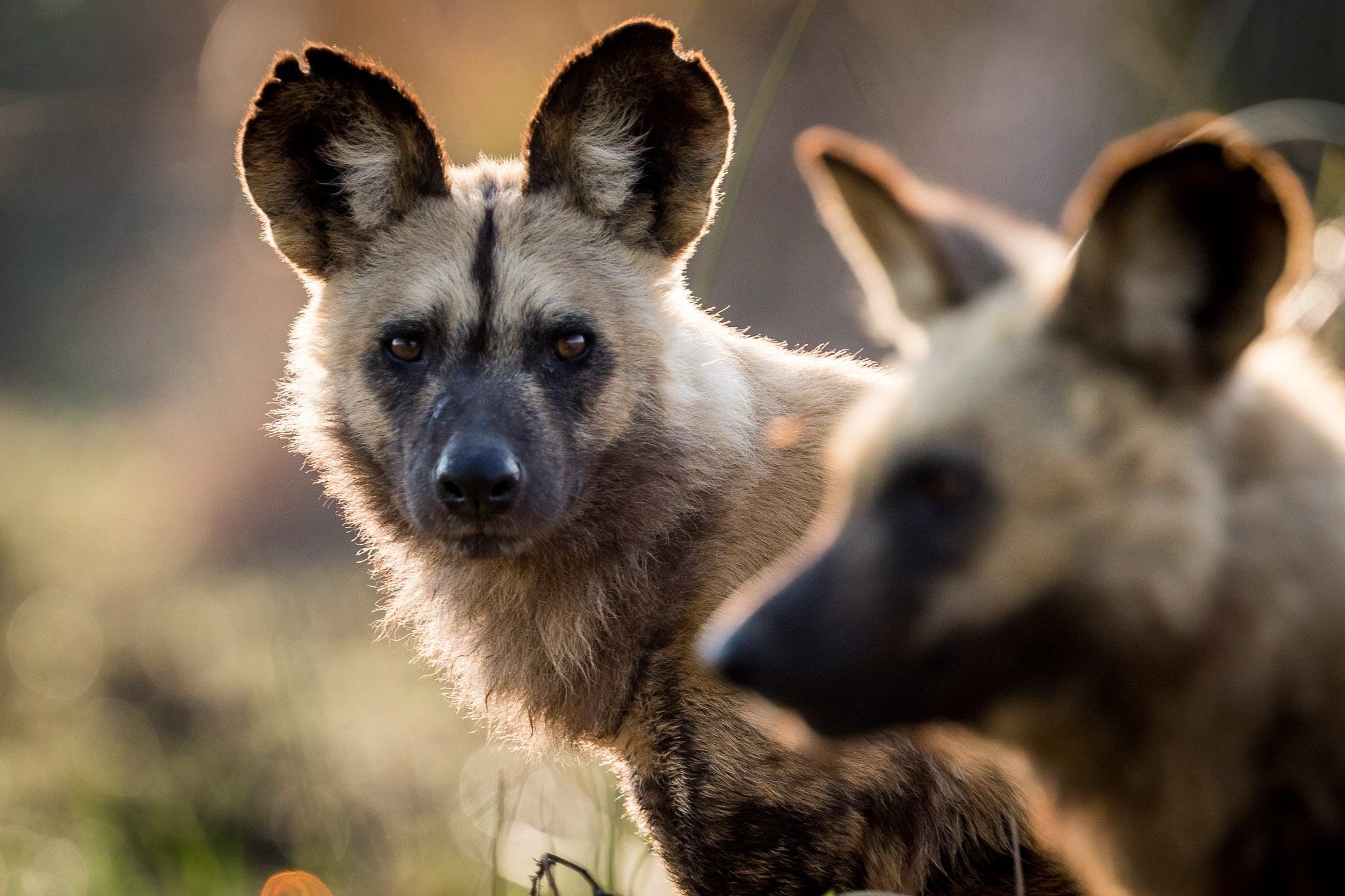
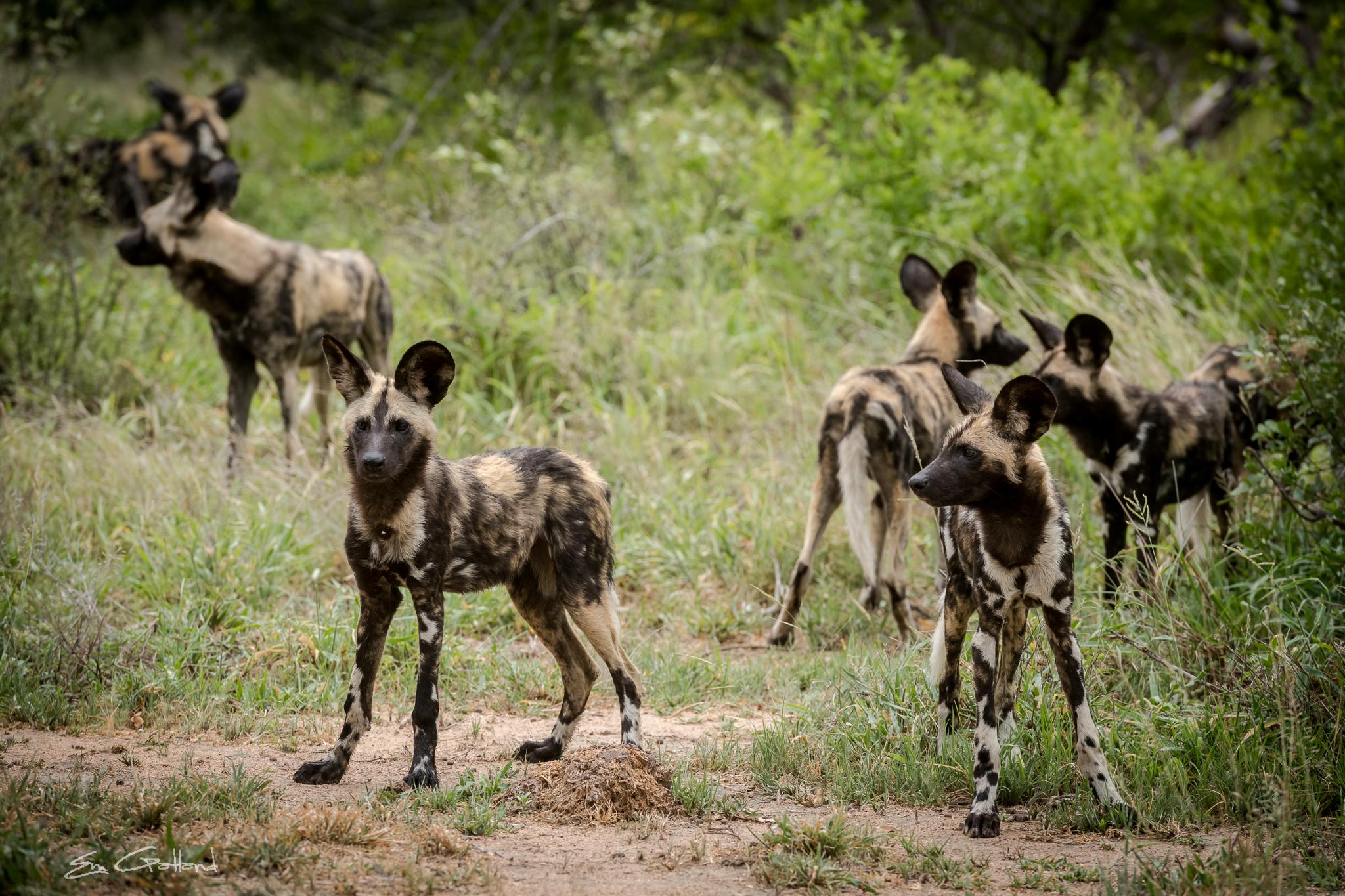
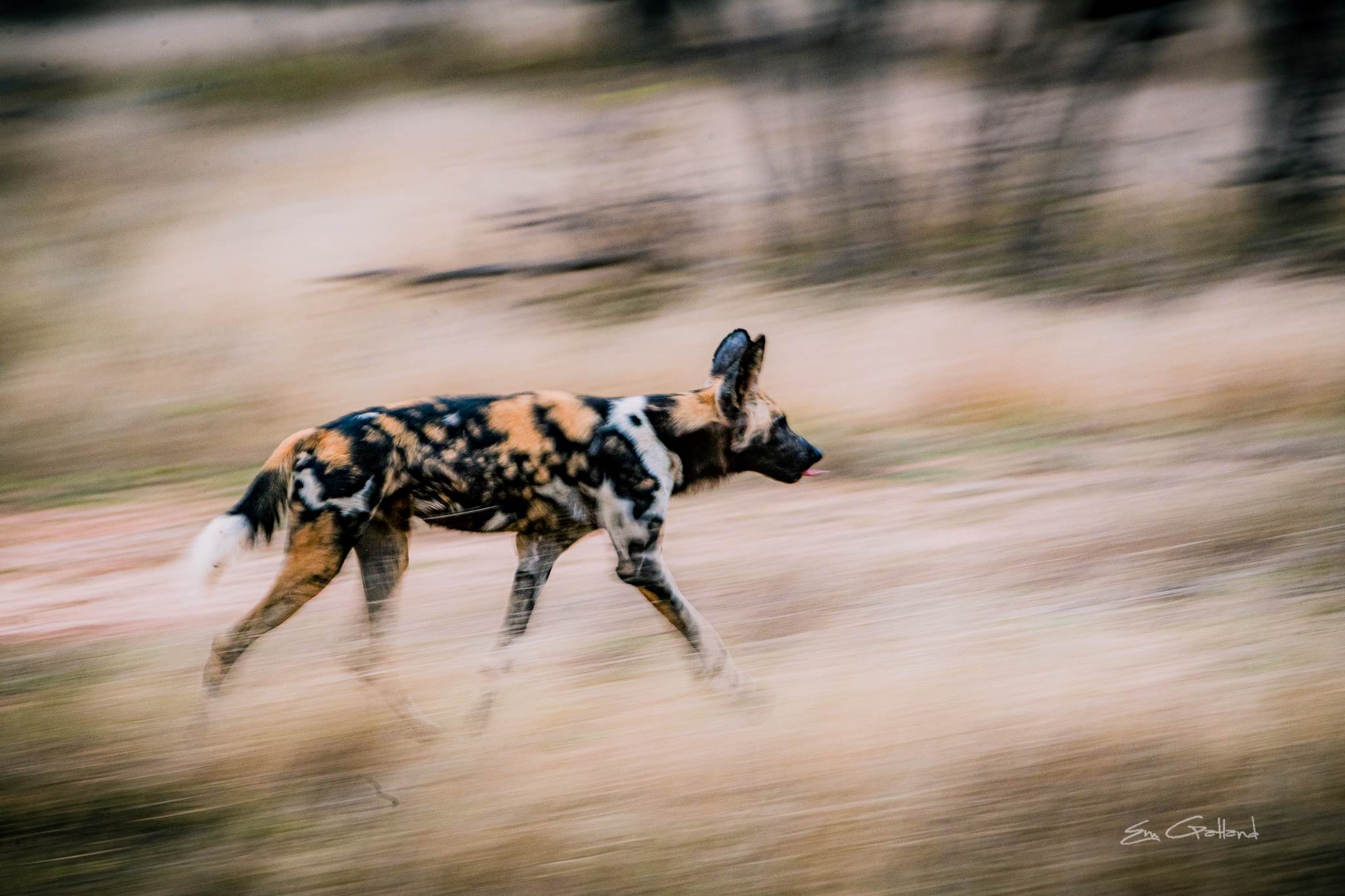
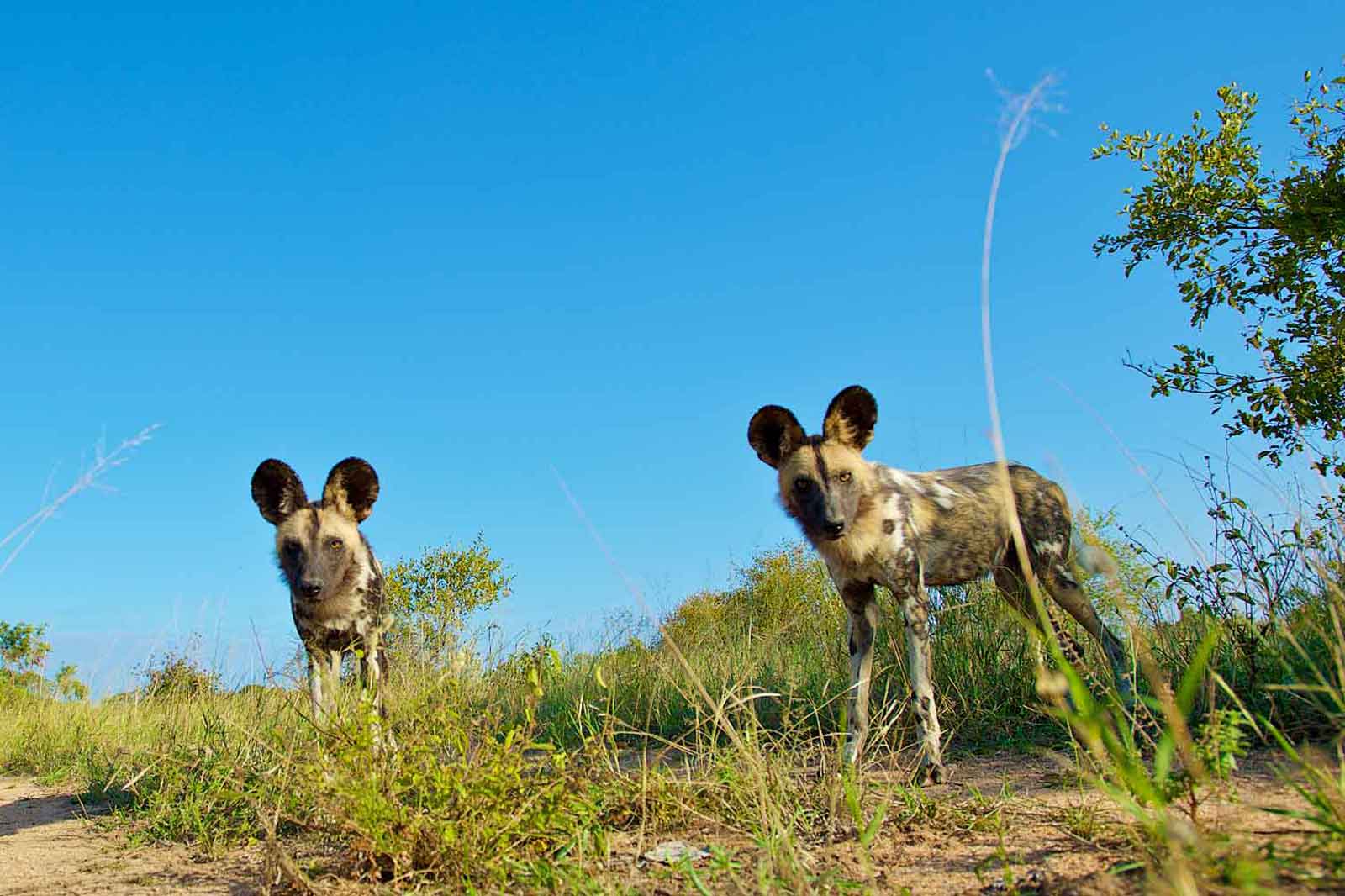
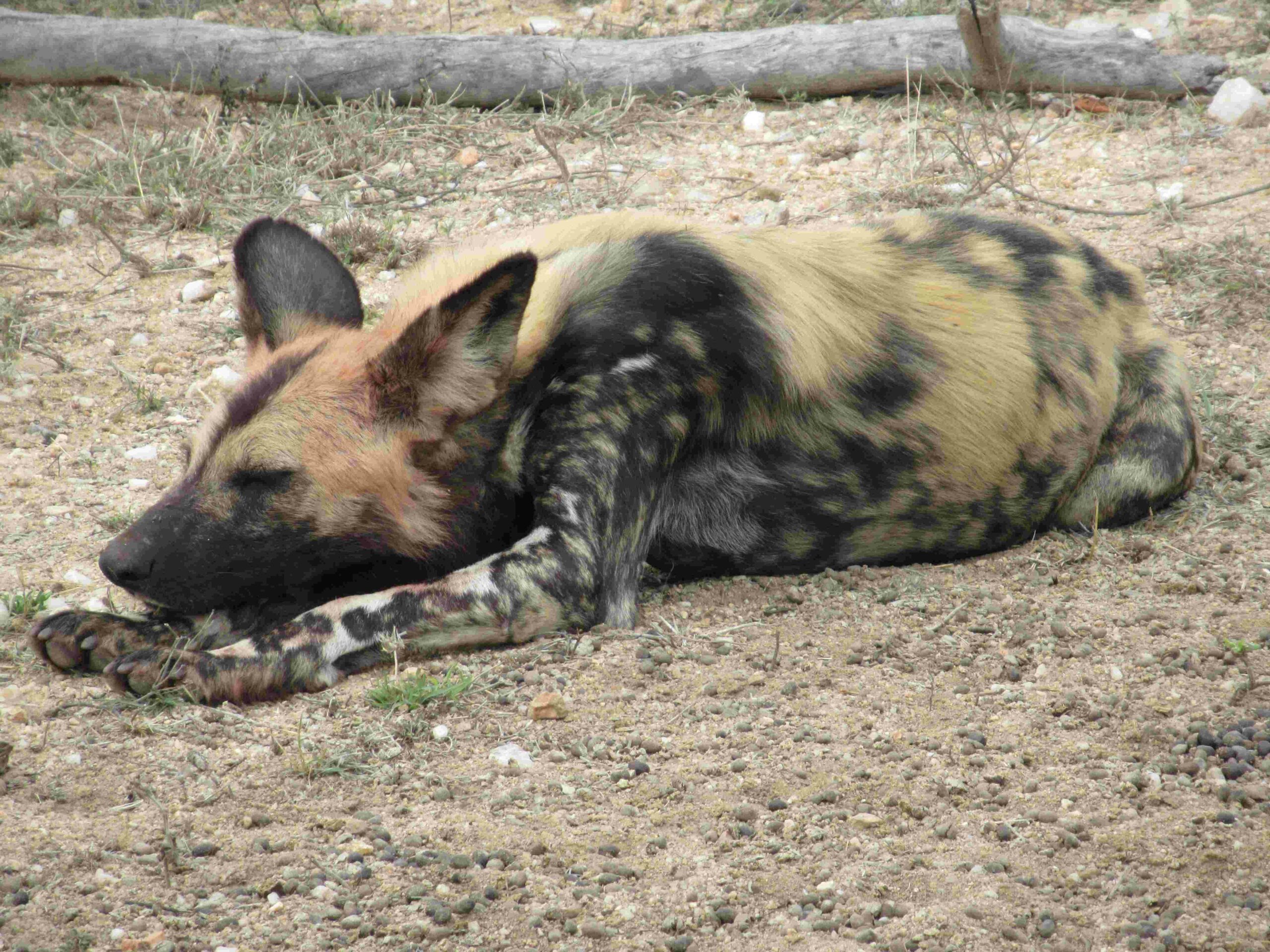
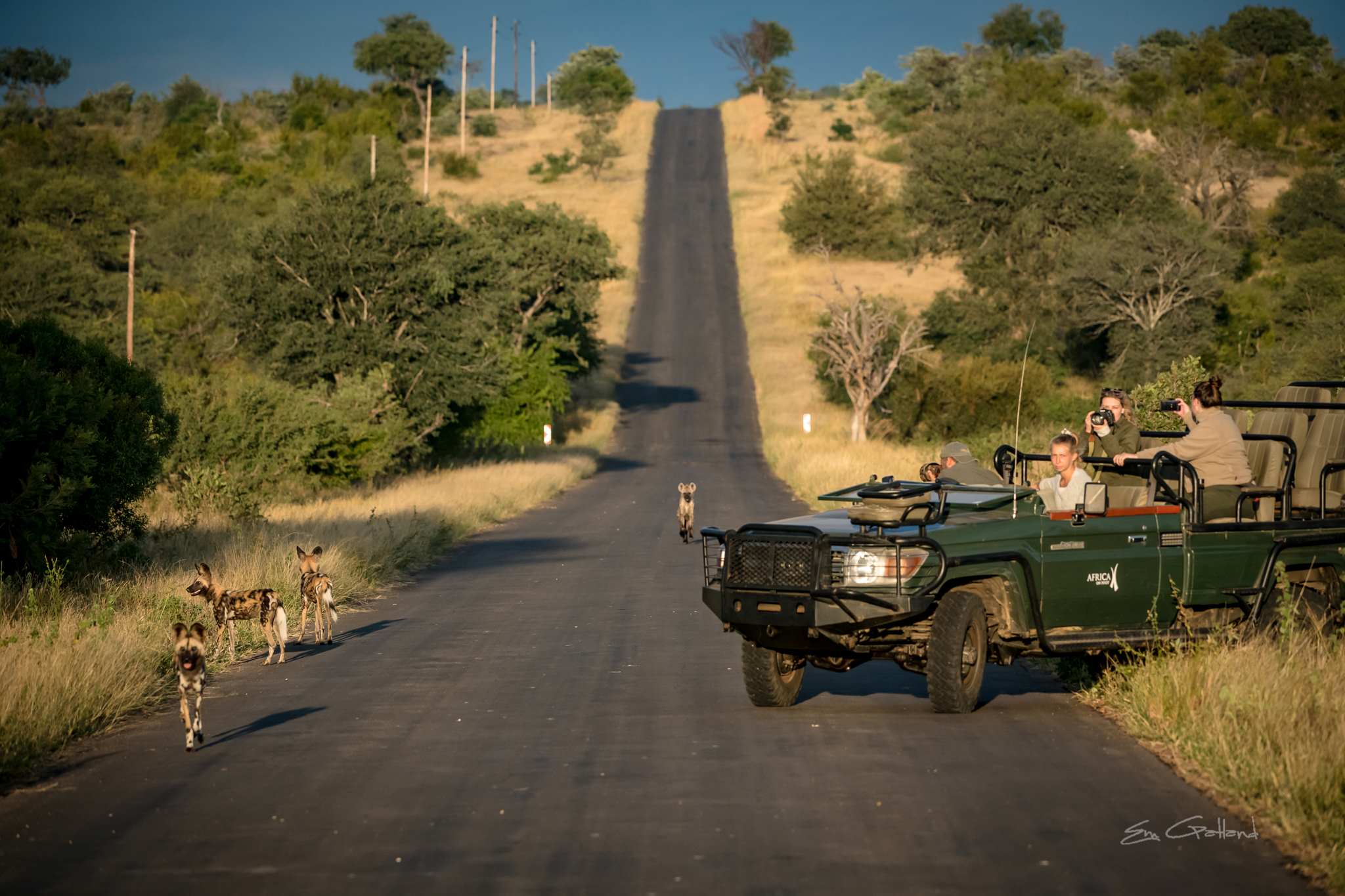
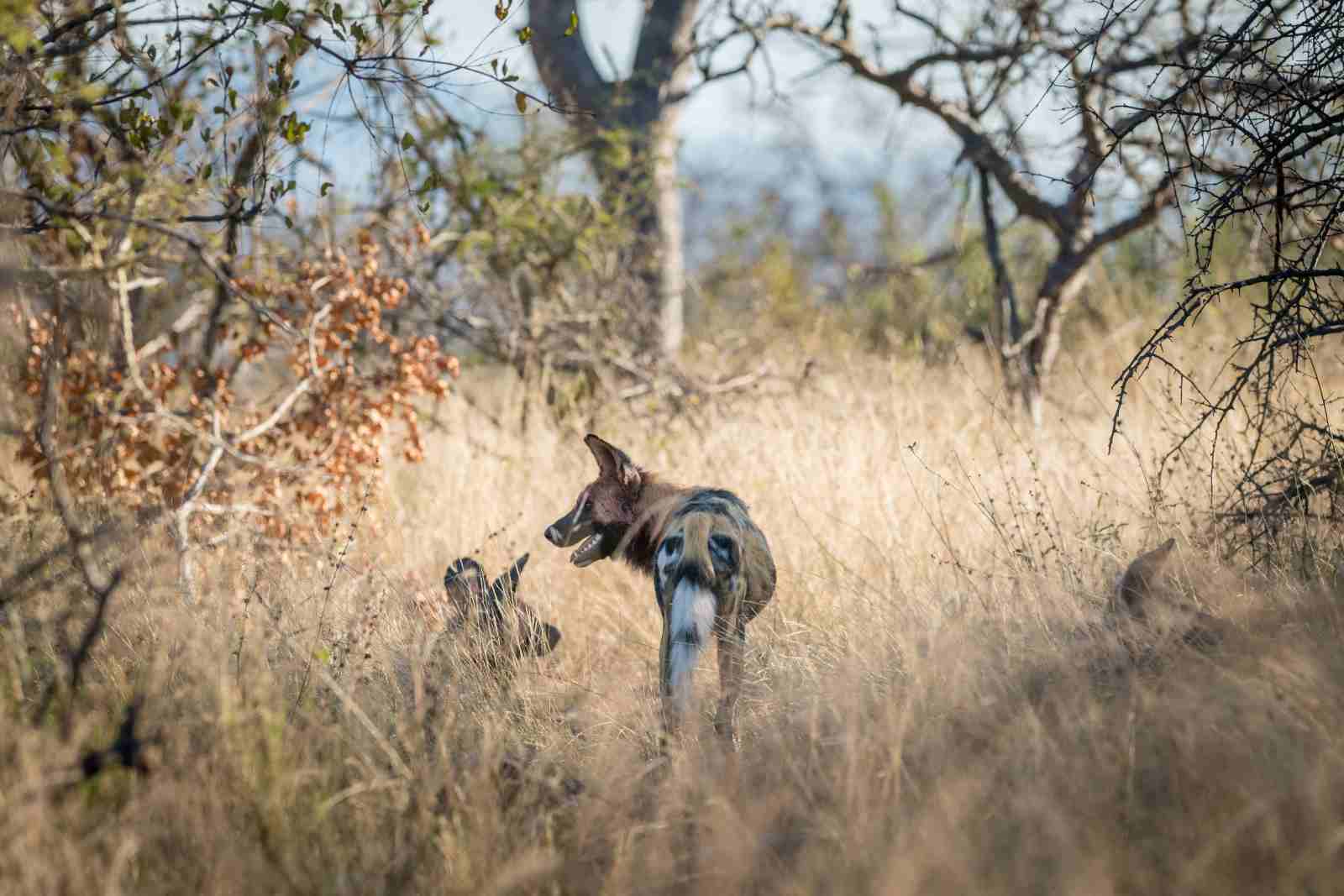
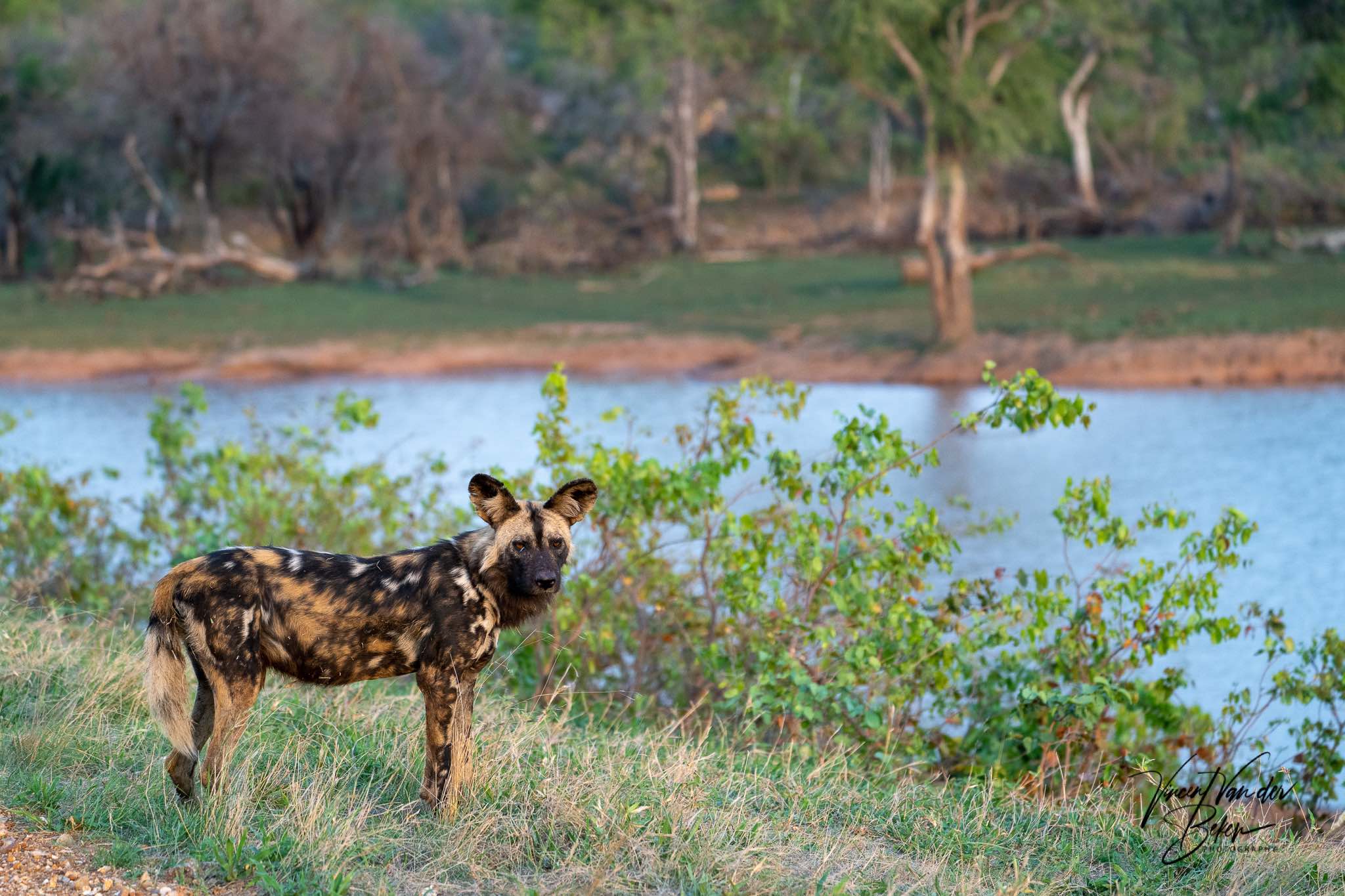
Leave a Comment